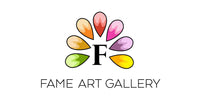Frans Hals
Frans Hals: A famous Dutch Age Artist
Introduction:
Frans Hals was a phenomenal Dutch portrait painter of the seventeenth century. During his career, his art went through a few changes as things in his day-to-day life changed. Frans Hals was the child of a clothworker and a young lady, both from Mechelen. In fact, he was an outstanding artist. He was not quite the same as anybody of his time. Since he was so remarkable, he didn't leave behind numerous followers, unlike most artists.
Early Life:
Frans Hals was born in 1580. When Hals was young, he spent the rest of his life in Haarlem in the Netherlands. Hals just left Haarlem once, for a little while, to Antwerp. At that time, he joined the Guild of St. Luke of Haarlem, well known for the registered artists.
After this, he married Annetje Harmensdochter Abeel. They had two kids together; however, she passed away in 1615. Two years after that, the Dutch painter married Lysbeth Reyniers and had eight children with her. Out of Hals' eight children, five of them became painters.
Famous Artworks:
All of Hals' initial works have a happy soul to them. Some of his most well-known artistic creations during this time include "The Merry Company," "Peeckelhaering," "The Merry Drinker," "Malle Babbe," and "Vagabond Girl." In his works of art, he appears to have captured a beautiful moment in the time. A part of his artistic creations during this time is "Man with Arms Crossed," "The Laughing Cavalier," "Picture of Isaac Abrahamszoon Massa," "Pieter van nook Broecke," "Nicolaes Hasselaer," and "Willem van Heythuyzen."
Hals turned out to be very famous between the period 1630 and 1650 and painted six group portraits and more than 100 single portraits. In 1644, Hals became an officer of the Guild of St. Luke. The best of Hals' initial works is a painting called "Banquet of Officers of the Civic Guard of St. George at Haarlem," which was painted with a very free brushstroke that was not normal, unlike anything of that time. Looking at those paintings can also give you a feeling of connection between the figures.
Final Years and Death:
Hals was also a member of the local chamber of rhetoric and, in 1644, director of the Painters Corporation at Haarlem. Frans Hals passed away in Haarlem in 1666 and was buried in the city's St. Bavo Church.


